Analyzing 1 Carat Cubic Zirconia Pricing Factors

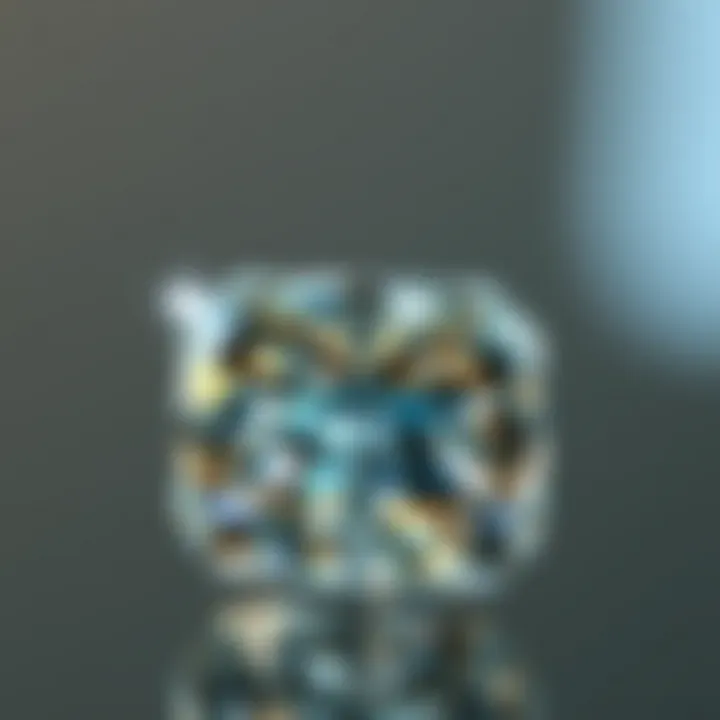
Intro
In the gem world, few have sparked as much discussion as cubic zirconia, more specifically, the one-carat version. The journey of cubic zirconia began in the late 1970s, when it was synthesized in a lab, shooting straight into jewelry collections everywhere. This article opens the door to a detailed analysis of 1 carat cubic zirconia pricing. It's a topic that can leave even the savviest of buyers scratching their heads. From market forces to the quality of production, understanding these elements can be pivotal for anyone looking to invest in or purchase cubic zirconia.
We will explore various factors influencing these prices, make comparisons with natural gemstones, and arm you with useful insights for smart decision-making. If you’re a gemstone enthusiast, collector, or just someone wanting to buy a piece of jewelry, grasping these dynamics is essential. Let's dig into the details.
Understanding Cubic Zirconia
When discussing gemstones in the modern market, cubic zirconia (CZ) stands out not just for its aesthetic appeal, but also for its intriguing pricing dynamics. This section aims to lay the groundwork for a deeper exploration of cubic zirconia by delving into its fundamental characteristics, production processes, and comparisons with other stones. Here, knowledge of CZ isn't merely academic; it is crucial for consumers and collectors alike to make informed decisions.
What is Cubic Zirconia?
Cubic zirconia is a synthetic gemstone that has gained monumental popularity over the years. Originating from zirconium dioxide, it was first created in the late 1970s, and has since evolved into a prime choice for jewelry designers and consumers seeking an exquisite look without the hefty price tag of natural gems. Effortlessly mimicking diamonds, cubic zirconia exhibits remarkable brilliance and fire—qualities often highlighted when it's set in various forms of adornment. In essence, this gemstone offers an affordable alternative to traditional choices, appealing to a wide range of buyers.
Comparison with Other Gemstones
In the grand tapestry of gemstones, the comparisons between cubic zirconia, diamonds, and moissanite are paramount. While diamonds reign supreme in terms of luxury and status, cubic zirconia presents a striking balance between quality and cost. Here are some key points to consider when comparing CZ with its natural counterparts:
- Pricing: Cubic zirconia typically costs a fraction of what a diamond would. The average price for a one-carat CZ can be around $20-$30, while diamonds can range from $1,500 to over $10,000 depending on quality.
- Durability: The hardness of cubic zirconia on the Mohs scale is around 8-8.5, making it durable for everyday wear. Comparatively, diamonds are rated 10, but few will see the kind of wear that would damage CZ.
- Appearance: While CZ can be made to imitate various diamonds, sometimes, it may be too brilliant and flawless—an aspect that may not sit well with purists.
"Cubic zirconia can dazzle just as brightly as a diamond, but it’s in the subtleties of nature that true gems stand out."
Cubic Zirconia Production Process
Understanding the production of cubic zirconia can shed light on its affordability and availability. Unlike natural stones, which undergo less predictable geological processes over millions of years, cubic zirconia is manufactured in controlled environments. The process typically involves:
- Melting: The initial step requires achieving very high temperatures to melt zirconium oxide, turning it into a liquid state.
- Crystallization: Upon cooling, the melted substance crystallizes into the cubic structure that gives cubic zirconia its name.
- Cutting and Polishing: Finally, skilled artisans cut and polish the stones to enhance their optical qualities. This stage is crucial in determining the stone's final appearance, contributing to its brilliance and overall allure.
Each of these steps is essential for ensuring that the cubic zirconia produced meets the standards expected by consumers and jewelers alike. Thus, understanding these nuances lends invaluable insights when evaluating the pricing and market demand for this captivating gemstone.
As we delve deeper into cubic zirconia pricing dynamics, remember that the understanding of what makes up this stone is just as important as knowing how it stands in relation to its competitors.
Exploring Price Factors
Understanding the factors that affect the pricing of 1 carat cubic zirconia is crucial for anyone looking to invest in or purchase these gemstones. The price does not solely depend on the aesthetic appeal or sheer size of the stone; it varies significantly based on multiple market dynamics, production quality, and even brand perceptions. By digging into pricing factors, buyers can make educated decisions, ensuring that they receive value for their investment. This section elaborates on these key elements to illuminate the often opaque pricing landscape of cubic zirconia.
Market Demand and Supply Influence
The demand and supply equation holds significant weight in determining the price of cubic zirconia. When interest in cubic zirconia increases, perhaps due to a growing trend for more affordable alternatives to natural diamonds, prices tend to rise. Conversely, if supply exceeds demand—perhaps through the emergence of new suppliers or advancements in production yielding more stones—the prices might drop.
- In recent years, the popularity of cubic zirconia has surged primarily among millennials who value budget-friendly yet attractive jewelry. This rising demand can contribute to increased pricing.
- It’s noteworthy how seasonal trends also play a part in this game; for instance, around holidays or special occasions, the demand tends to spike, leading to fluctuation in prices.
"Understanding market demand gives consumers an edge in securing the best prices while providing insight into future trends."
Quality and Cut Specifications
Quality aspects play a monumental role in cubic zirconia pricing as they directly correlate to the stone’s brilliance and overall appearance. The cut of the cz affects how well it reflects light, often described as its sparkle.


- Clarity: Higher clarity grades naturally command higher prices. Imperfections or inclusions can diminish the gemstone's appeal and therefore its market value.
- Cut: Different cuts—like round, princess, or oval—not only influence the stone's sparkle but also its perceived size. Well-executed cuts ensure optimal light performance, elevating the price. A poorly cut stone, however flawless, may not spark the same interest being seen as less attractive.
- Color: While cubic zirconia can be crafted in various colors, the most valuable ones tend to be colorless, closely resembling iconic diamonds. This demand for colorless stones raises their prices compared to their colored counterparts.
Brand Influence on Pricing
Brand recognition significantly impacts the pricing of cubic zirconia. Well-known jewelry brands often charge a premium for their pieces, supported by their reputation for quality and craftsmanship. When you consider a big-name company—like Swarovski—you might be paying more, but there’s a trust factor built in with that price.
- Reputation: Established brands typically use higher standards for sourcing and crafting their gemstones. Buyers may feel confident in the quality they’re purchasing, further justifying the elevated price.
- Marketing: The way a brand portrays cubic zirconia greatly influences consumer perceptions. Elegant advertisements or celebrity endorsements can make buyers equate the product to luxury, shifting their willingness to pay.
- Consumer Loyalty: Many find themselves loyal to brands that provide exceptional quality, even at a higher price point. This loyalty translates into continued sales, buoying brand pricing power.
In summary, a thorough understanding of the price factors behind cubic zirconia is essential for informed purchasing decisions. Buyers must keep a keen eye on demand fluctuations, quality specifications, and brand influences to navigate costs effectively.
For additional insights on gemstone pricing trends, you can visit Wikipedia or peruse discussions on Reddit.
Employing this knowledge as a buyer will not only enable smarter purchasing choices but will enhance the overall experience in the jewelry market.
Cubic Zirconia Pricing Structures
Understanding the pricing structures of cubic zirconia is essential for both consumers and industry players. In the ever-evolving market of gemstones, having a grasp on pricing mechanisms helps buyers make informed choices, while sellers can adjust their strategies accordingly. This section digs into the nuances of pricing, allowing enthusiasts and professionals alike to navigate the complexities involved.
Retail Price Range Overview
The retail price of a one-carat cubic zirconia typically fluctuates depending on several factors, including clarity, cut, and color. Generally, the price range can start from around $20 and go up to $150 or more. This diversity in price reflects the various qualities and market strategies.
For example, a high-quality cubic zirconia with flawless clarity and an excellent cut can command a higher price than one with more visible inclusions or a less precise cut. Here’s a breakdown of common price tiers in retail:
- Budget Options: $20 - $50 for basic styles and lower-quality stones.
- Mid-range Selections: $50 - $100, where quality and cut begin to balance.
- Premium Choices: $100 - $150+, representing superior clarity, cut precision, and brand recognition.
The actual retail price can vary significantly based on the brand or the retailer’s perceived value. This means it's crucial for buyers to understand what they are paying for and look for trusted sellers.
B2B Pricing Models
B2B pricing in cubic zirconia reflects the intricacies of the supply chain. Wholesale prices can significantly differ from retail, mainly due to factors such as bulk ordering and supply agreements. Many suppliers offer volume discounts that are not available to the general public.
Common models for B2B pricing include:
- Volume-Based Pricing: Discounts offered when a buyer purchases larger quantities, making it beneficial for retailers or manufacturers.
- Contractual Pricing: Long-term agreements between suppliers and larger buyers can lead to fixed prices, which may provide stability against market fluctuations.
- Dynamic Pricing Models: Prices that adjust based on market conditions, demand, or availability. This can be common in times of crisis or high demand.
Understanding these B2B models is vital for businesses that wish to remain competitive and for those entering the market. Knowledge enables negotiations and purchasing strategies that can lead to better profit margins.
Cost Comparison with Natural Diamonds
When stacked against natural diamonds, cubic zirconia represents a fraction of the cost—often up to 1/100th. This stark price difference can come down to a variety of factors:
- Source Materials: Cubic zirconia is synthetic, meaning significantly lower costs in sourcing compared to mined diamonds, which require extensive labor and regulatory scrutiny.
- Manufacturing Processes: Creating cubic zirconia involves processes that while sophisticated, do not entail the same financial burden as diamond extraction.
- Market Perception: Natural diamonds carry a significant prestige associated with their rarity and status, affecting their retail price far beyond intrinsic value.
"The beauty of cubic zirconia lies in its ability to mimic diamonds while offering accessibility and affordability to a broader audience."
This understanding paves the way for consumers to appreciate the natural versus synthetic debate while recognizing the sustainable advantages of choosing cubic zirconia over natural stones.
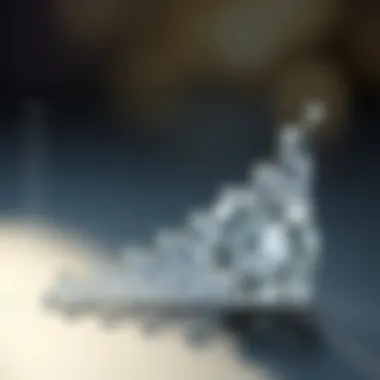
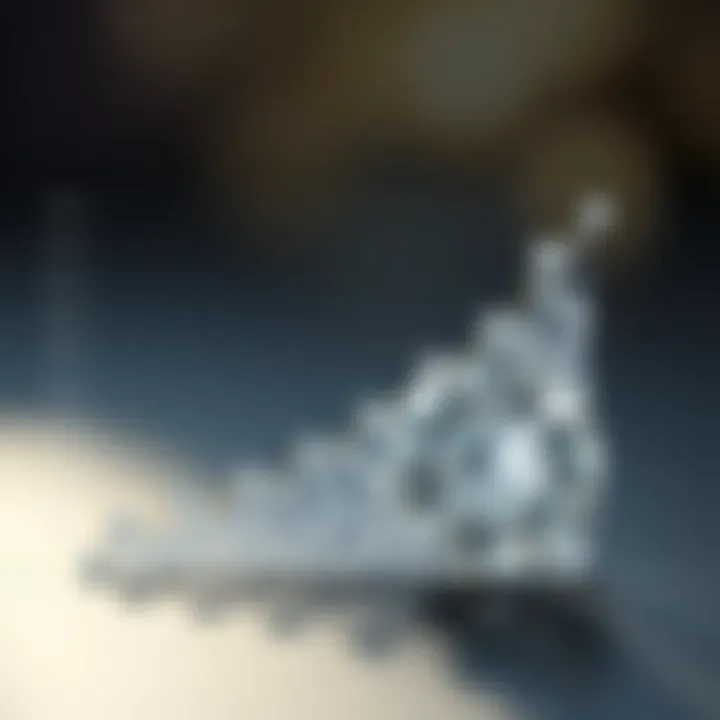
As we dissect these pricing structures, it is clear that knowing the ins and outs of cubic zirconia pricing enables informed decisions, whether for personal purchases or business transactions. This foundation sets the stage for deeper exploration of consumer perspectives, further integrating economic considerations with personal and emotional factors.
Consumer Perspectives
Understanding consumer perspectives is pivotal when discussing cubic zirconia pricing. This section sheds light on what drives buyers toward cubic zirconia, how they value these stones, and the hurdles they face in evaluating prices. By grasping these elements, we can better appreciate the market dynamics and the implications for potential buyers.
Buyer Motivations for Cubic Zirconia
When exploring why individuals choose cubic zirconia over other gemstones, motivations vary widely. For many, the allure lies in affordability. A one-carat cubic zirconia can often be found at a fraction of the price of a diamond, allowing consumers more options without breaking the bank.
A few key reasons buyers gravitate towards cubic zirconia include:
- Cost Efficiency: Consumers seeking a budget-friendly option that still provides aesthetic appeal often find cubic zirconia to be an attractive alternative.
- Versatility: Cubic zirconia comes in various colors and cuts, making it adaptable for different settings and styles. Customers appreciate the ability to customize their pieces without hefty expenses.
- Ethical Considerations: Many buyers are now mindful of the ethical implications surrounding gemstone mining. As cubic zirconia is synthesized, it offers a guilt-free choice for conscious consumers.
Perceptions of Value in the Market
Perception shapes how cubic zirconia is viewed in the gem market. While some regard it as merely a costume accessory, others see real value based on its beauty and performance. The challenge comes in bridging this gap in perception.
Consumers who understand the properties of cubic zirconia often regard it as more than just a substitute gemstone. They recognize it for its sparkle, durability, and brilliance, thus enhancing its perceived worth.
Factors influencing perceptions of value include:
- Brand Reputation: Certain brands may foster trust and credibility, leading consumers to believe their products carry greater value.
- Peer Influence: What friends or family consider valuable can significantly sway perceptions. Social circles often dictate preference trends.
- Market Education: Buyers educated about gemstone properties tend to see the intrinsic value of cubic zirconia beyond the price tag.
Challenges in Price Assessment
Determining a fair price for cubic zirconia can be quite elusive. Various factors contribute to this complexity, leading to confusion and potential dissatisfaction among buyers.
Some prevalent challenges include:
- Lack of Standardization: Unlike diamonds, cubic zirconia doesn’t have universally accepted grading systems. This creates discrepancies in pricing across retailers, making comparisons trickier.
- Quality Variances: Cubic zirconia can exhibit significant variations in quality based on the manufacturing process. Differentiating between high and low-quality stones requires expertise.
- Psychological Pricing Perceptions: The way prices are presented can influence buyer decisions. For instance, a cubic zirconia priced at $199 might feel more appealing than one at $200, despite the difference being negligible in reality.
Ultimately, understanding consumer perspectives enables potential buyers to navigate the complexity surrounding cubic zirconia pricing more effectively, safeguarding against potential pitfalls. By grasping motivations, perceptions of value, and the challenges in price assessment, individuals can make informed decisions when purchasing this fascinating gemstone.
The Future of Cubic Zirconia Pricing
Understanding the future of cubic zirconia pricing is essential for buyers, collectors, and industry professionals alike. As gemstone enthusiasts look to invest wisely, recognizing the evolving landscape can provide significant advantages. From emerging trends in production technology and design to the environmental impacts of sourcing, knowing where prices may head informs purchasing decisions and expectations within this market. Here, we will navigate through several key considerations that are shaping the future of cubic zirconia pricing.
Emerging Trends and Innovations
In the realm of cubic zirconia, innovation is always at the forefront. Manufacturers are continuously enhancing their techniques, leading to better clarity and color options. Emerging trends include cutting-edge production methods like lab-grown alternatives and advancements in synthetic stone-cutting techniques. These innovations can not only improve the perceived value of cubic zirconia but can also influence pricing dynamics significantly.
- The rise of computer-aided design (CAD) tools is transforming how cubic zirconia is cut and polished, resulting in more intricate styles and settings that appeal to modern buyers.
- Eco-friendly practices are gaining traction, as many consumers now favor sustainably produced gemstones. This enhances value perception and may influence market price.
With these trends, buyers must be mindful of how they express personal style through cubic zirconia choices. Investing in newly designed pieces may dictate future price appreciation, providing both aesthetic and financial value over time.
Sustainability Considerations
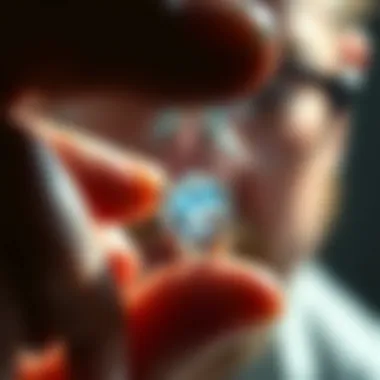
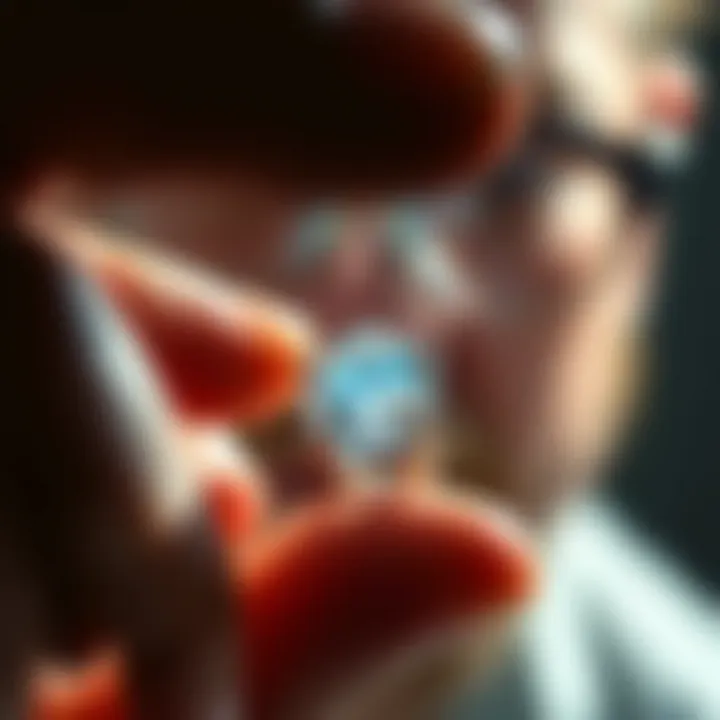
Sustainability has become more than just a buzzword; it is altering purchasing decisions across various markets, including the gemstone industry. Cubic zirconia, often heralded as an ethical alternative to natural gemstones, is being scrutinized for its environmental impacts as well.
As consumers become more eco-conscious, manufacturers are responding by:
- Implementing ethical sourcing protocols to ensure minimal environmental disruption.
- Enhancing recycling processes for cubic zirconia, contributing to reduced waste in the market.
These sustainability considerations play a pivotal role in shaping future pricing practices. If consumers increasingly prefer responsibly sourced stones, cubic zirconia priced with ethical considerations may see a rise in value relative to traditional sources. As the demand shifts toward sustainable options, procurement strategies and retail pricing will need to adapt accordingly.
Potential Market Shifts
Market shifts are often influenced by broader economic factors, societal trends, and changing consumer preferences. Potential shifts in the cubic zirconia market are no exception, and understanding these can provide insights for buyers.
Some notable potential shifts include:
- An increase in online retail sales, as more buyers prefer the convenience of e-commerce. This may push brands toward competitive pricing strategies, impacting overall market prices for cubic zirconia.
- The possibility of global supply chain disruptions affecting availability and costs associated with production. For instance, trade policies or tariffs can impact how cubic zirconia is sourced and priced, leading to fluctuations.
- Cultural acceptance and growing knowledge about cubic zirconia compared to diamonds may also shift consumer behavior, attracting a broader audience who appreciates affordability and variety.
As the market evolves, being aware of these shifts allows buyers to make informed decisions, aligning their expectations with future pricing trends in the cubic zirconia landscape.
In summary, the future pricing of cubic zirconia will likely be dictated by innovations in design and production, increased emphasis on sustainability practices, and market shifts shaped by consumer demand and economic trends. Buyers equipped with this knowledge will be better positioned to navigate the complexities of cubic zirconia investments.
For further information on gem prices and insights, consider visiting authoritative resources such as Wikipedia, Britannica, and community discussions on Reddit or industry insights at Gemological Institute of America.
Tips for Buyers
When diving into the realm of cubic zirconia, or CZ, being a well-informed buyer can save you both headaches and dollars. Unlike diamonds, cubic zirconia is artificially made, allowing for a wide range of choices, prices, and qualities. Understanding these intricate facets helps you avoid a financial misstep when making your purchase.
How to Choose Quality Cubic Zirconia
Assessing Clarity and Color
One key aspect to consider when assessing cubic zirconia is clarity and color. Now, clarity refers to the number of inclusions or blemishes within the stone. Natural gemstones often harbor imperfections, which can significantly lower their value; however, cubic zirconia is manufactured with precision to achieve high clarity. This makes CZ appealing to those looking for a flawless appearance without breaking the bank.
On the flip side, color plays an equally vital role. Quality CZ is typically colorless, resembling a diamond to the untrained eye. However, variations exist, with some stones exhibiting vibrant hues. When selecting a cubic zirconia, keep in mind your intended setting and the overall color scheme. A colorless stone can enhance a classic look, while colored options can provide a striking contrast.
A unique feature of assessing clarity and color is the ability to choose exactly what fits your style. For instance, if you prefer a touch of pink or blue, you can easily find high-quality colored CZ. This flexibility brings numerous advantages, such as personalization and affordability, elevating your accessory game without the hefty price tag.
Evaluating Cut Quality
In addition to clarity and color, cut quality remains a crucial determinant of a gem’s overall beauty. The cut impacts the stone’s brilliance and how well it plays with light. A well-cut cubic zirconia displays striking fire and sparkle, just like its diamond counterpart. When examining a CZ, pay attention to the symmetry and proportions; a poorly cut stone will look dull and lifeless.
What makes cut quality unique is that it combines artistry and science. Jewelers must balance technical precision with aesthetic appeal. A diamond-like cut of cubic zirconia often garners admiration because it emulates the allure of natural gems while being much more affordable. Although a higher quality cut may come with a bit more expense, the payoff in visual appeal is usually worth it.
Where to Buy Reliable Products
Finding trustworthy vendors is another pivotal part of the buying journey. Opt for established jewelers with positive reviews. If you're online shopping, check platforms known for quality, like Blue Nile or Brilliant Earth. Look for reviews on forums such as Reddit to get insights from buyers about their satisfaction levels.
You might also join jewelry enthusiasts’ communities on social media platforms like Facebook. Engaging in conversations can help you discover hidden gems, literally and figuratively. Such networks often share valuable tips that can lead you to reputable places for buying cubic zirconia.
Negotiating Prices Effectively
Once you’ve found a potential product or vendor, don't hesitate to negotiate prices. Haggling isn’t just for flea markets! Many jewelers have flexible pricing, especially if you're purchasing multiple pieces. Always keep in mind that some stores offer seasonal discounts or sales events, so timing your purchase could land you a better deal.
Also, be prepared to leverage the knowledge you’ve gained about clarity, color, and cut to negotiate. Understanding these elements not only empowers your bargaining position but also enhances your overall buying experience. Don't shy away from asking for price matches or inquiring about warranties or guarantees that can add extra value to your purchase.



